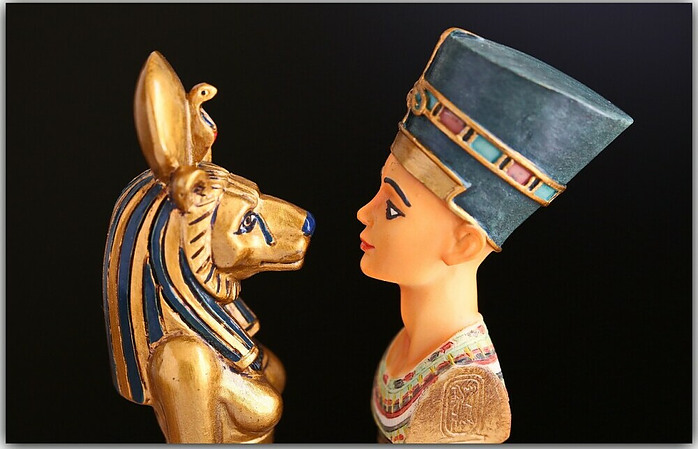The mentions of the Oils of Ancient Scripture Used in Biblical Times can be found throughout the Bible. But after the time of Christ, it was less frequent. Moses was given a whole recipe to work out to help the children of Israel. We know that hyssop was used during the great plagues in Egypt to protect the children of Israel from contracting disease. Frankincense (olibanum resin, frankincense) is mentioned in many places as the “holy oil of anointing.” Frankincense is known throughout history as an oil used to treat mental and emotional illnesses.
Oils From Ancient Scriptures Were Also Used in Egypt
When the early Egyptians used oils for their spiritual and religious rituals, they believed (based on evidence or not) that the more perfumed scented oils they wore, the closer it would bring them to the gods. They also believed that the more they perfumed their bodies, the more pleasure they would give their gods. So Egyptians – especially kings, pharaohs, priests, queens, and priestesses – gave a part to themselves with oils every day, and perhaps even several times a day.
When we read some stories about Cleopatra and the kings of Egypt, we learn that they literally bathed in oils and were massaged with them several times a day. They also wore cones soaked in oils with beeswax and fats on their heads. When the day’s high temperatures melted the wax, the fats and oils ran down their necks all over their bodies, perfuming them throughout the day. The Egyptians strongly believed that the oils held values that would allow them to enter the spiritual realm.
Let’s Take a Look at Some of the Uses of Oils of Ancient Scripture
Myrrh (Commiphora Myrrha)
Pregnant mothers anointed themselves to protect themselves from infections and to have good health. They also believed it would protect their children from the curse of generations. When diffused and inhaled during labor, it reduced anxiety, restlessness and strengthened calmness, and when massaged into the perineum it facilitated stretching. Used after childbirth to prevent or remove stretch marks and sometimes rubbed into the umbilical cord of newborns to protect the navel from infection, symbolizing the severance of the curse of generations inherited from ancestors. Perhaps because of all these applications, Myrrh was brought to Mary and baby Jesus. It was also used in ancient times for skin diseases, oral hygiene, embalming, and as an insect repellent. Egyptians wore fat cones on their heads containing myrrh, which melted in the desert sun, and kept their bodies bathed in myrrh and other oils. Myrrh has always been a popular base oil; from ancient times to the present day, it extends the life of the fragrance of other oils. Thus, it was mixed into many perfumes and ointments in biblical times. In Scripture, the word for myrrh, “muron,” was often translated as “ointment,” without revealing whether it included myrrh.
Frankincense (Boswellia Carterii)
A sacred oil used for anointing, a cure-all, to enhance meditation and raise spiritual awareness, assisted in dying, and embalming and perfuming. Frankincense was used to anoint newborn sons of kings and priests, which may be why it was brought to Jesus. Frankincense consists mainly of monoterpenes, and as an anointing oil, it strengthens the image of God in us.
Cedarwood (Cedrus Atlantica) – Cedar Tree
Leprosy cleansing, ritual cleansing after touching a dead person or other thing considered “unclean,” ritual cleansing from evil spirits, cosmetology, embalming, skin problems, many medicines, and calming effects. It is one of the first and oldest distilled oils in China, Sumeria, and Egypt. Cedarwood oil was used for embalming, disinfection, hygiene, and other purposes more than 5,000 years ago and was mentioned in Babylonian tablets dating to 1800 B.C.
Cassia (Cinnamomum Cassia)
An ingredient in the sacred anointing oil of Moses.
Onycha (Styrax Benzoin)
Perfume, mixed in sacred oils for anointing, bringing relief, comfort, and uplifting, ointment for healing skin wounds. It is used as a base oil.
Hyssop (Hyssopus Officinalis)
Spiritual cleansing, helping to focus thoughts during meditation, cleansing from sin, addictions, and destructive habits; an ingredient in many medicines, it provided respiratory relief, reduced congestion, and warded off evil spirits (during the Egyptian plagues, the Israelites marked the thresholds of their homes with a branch of hyssop, releasing its aromatic oils, along with the blood of a sheep, as protection from the angel of death). Jesus was offered a sponge soaked in sour wine and a hyssop branch during his last moments on the cross. Why hyssop? Crucifixion is death by suffocation when the lungs slowly fill with fluid. Inhaling the scent of hyssop may have been offered by women out of pity for those dying on the cross, making breathing easier and bringing physical and emotional relief.
Sandalwood / Aloe Vera (Royal Hawaiian Sandalwood)
Sandalwood is the fourth-highest semi-terpene of all oils (90%). Semiopterpenes reprogram inappropriate information and carry oxygen at the cellular level. Used for skin care, supports deep sleep (stimulates melatonin secretion), supports the female reproductive system and endocrine system; used for urinary tract infections.
Myrtle (Myrtus Communis)
Religious ceremonies, cleansing of ritual impurities.
Cypress (Cupressus Sempervirens)
Cure arthritis and laryngitis reduce skin scarring and spasms. Cypress oil is mentioned in Babylonian tablets dating to 1800 B.C.
Rose of Sharon / Cistus (Labdanum – Cistus Ladanifer)
Ladanifier was for uplifting and was an ingredient in perfumes. Ladanifer was also used in the treatment of colds and all others associated with inflammation and respiratory system infections, in addition to menstrual disorders and hysterical conditions.
Attention:
Chronically ill people and pregnant women – consult your doctor before using essential oils.